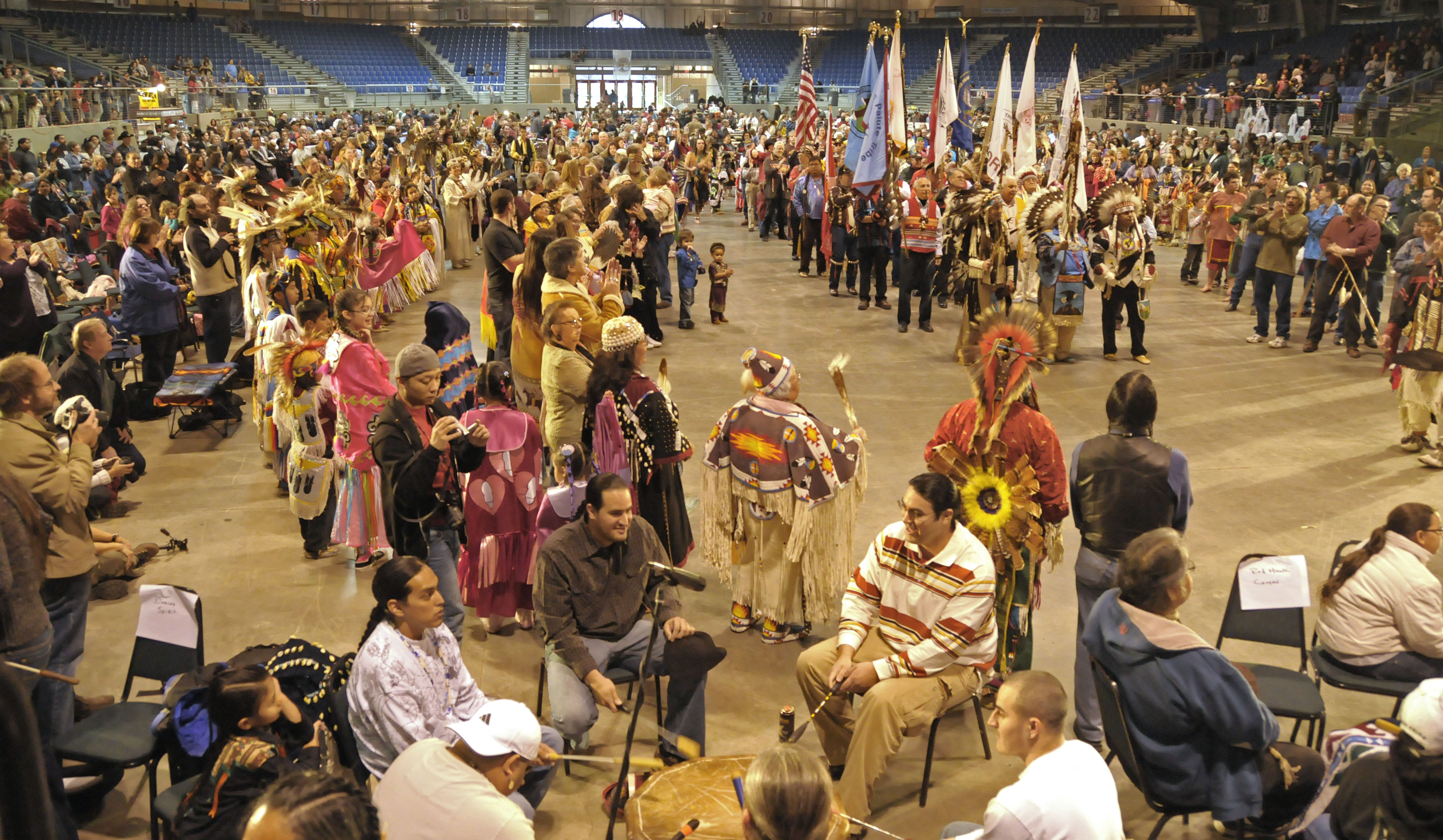Culture
Yesteryears -- Feb. 15, 2019
2014 – Tribal Employment Rights Office Director Greg Azure briefed the general membership on the early stages of implementing the Tribe’s Employment Rights Ordinance at the Feb. 2 General Council meeting held in the Tribal Community Center. TERO became effective on Nov. 27, 2013. “We’re making progress on getting the program established and mainly putting together the pieces that will be the infrastructure for TERO to move forward,” Azure said at the beginning of his presentation. In approving TERO, the Grand Ronde Tribe joined with more than 300 other Native Tribes and Alaska Native villages that have TERO-like ordinances and became the second Oregon Tribe to enact that type of legislation.
2009 – Western Oregon Tribes marked Oregon’s 150th birthday of statehood with the Gathering of First Nations event honoring Native presence in the area. Five federally recognized Tribes of western Oregon -- the Confederated Tribes of Coos, Lower Umpqua and Siuslaw Indian, Coquille Indian Tribe, Cow Creek Band of Umpqua Tribe of Indians, Confederated Tribes of Grand Ronde and Confederated Tribes of Siletz -- banded together and put on a well-attended, two-day celebration held Jan. 30-31 in Salem to celebrate the state’s 150th birthday while symbolically reminding residents that Oregon’s history began long before admission to the Union.
2004 – A traditional naming ceremony was planned for Tribal member Jim Holmes, the first time in more than 95 years that the ceremony was held in Grand Ronde. Warm Springs Medicine Men Wilbur Johnson and Larry Dick were set to oversee the ceremony and traditional medicine dancers and singers also were planning to participate. A meal, giveaways and a medicine dance were all planned for the festivities. Initially, it was not planned as a big event, but excitement about the opportunity to bring a traditional ceremony to the people of Grand Ronde changed that.
1999 – The success of the Grand Ronde Tribe drew recent praise from Bureau of Indian Affairs officials as a potential model for economic development in Indian Country. “They’re a model Tribe for us,” said Portland Area BIA Director Stanley Speaks. “They’ve shown that a Tribe doesn’t need to be in the business for 50 to 100 years to be successful.” The comments followed a presentation on the Tribe’s developmental history that Tribal Council member Mark Mercier gave to BIA superintendents from throughout the Northwest, including Alaska and Idaho.
1994 – Tribal Council Vice Chair Kathryn Harrison was elected to the Native American Rights Fund board of directors. NARF had been in existence for 22 years and represented people and Tribes from almost every state in the union. It was formed to advocate for the rights of Native Americans, especially the poor and disadvantaged, who could not afford their own legal representation. The board of directors includes leaders of Tribes from across the country.
1989 – Tribal Council established the Tribal Burial Fund, which capped the benefit at $3,000 per funeral, and made it eligible to all enrolled Tribal members or those who met the criteria to be enrolled. Headstones were also an option depending on the availability of funds. Tribal Council designated Merle Holmes to administer the fund.
1984 – Several candidates for Tribal Council wrote letters to Smoke Signals detailing why they were the best choice to help lead the Tribe post-Restoration. One of these candidates was Merle Holmes. “I know many of the Grand Ronde Tribal members and you know me, for I have been three times chairman of the Tribal Council. I am asking for your write-in votes.”
Yesteryears is a look back at Tribal history in five-year increments through the pages of Smoke Signals.

